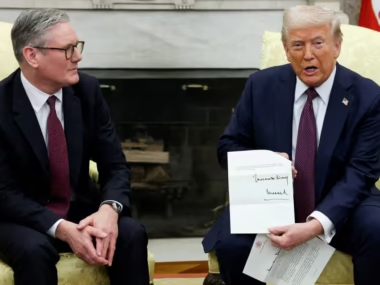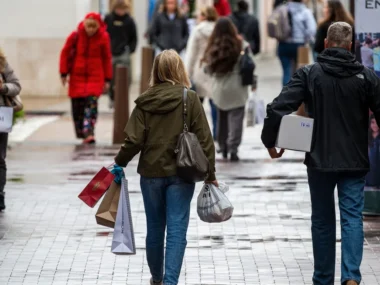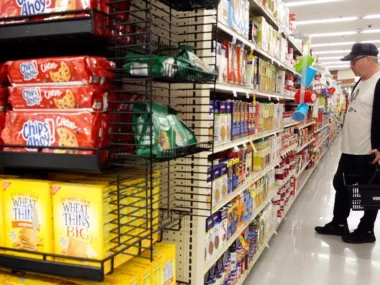According to the government’s latest report on Thursday, the U.S. economy continued to show resilience, growing at an annual rate of 2.1% from April through June. This figure remains unchanged from the previous estimate, indicating a steady performance despite higher interest rates.
Comparatively, the second-quarter GDP expansion represented a slight slowdown when compared to the 2.2% annual growth seen in the first quarter, with contributions from consumer spending, business investment, and state and local government expenditures driving the economic growth during this period.
Despite the Federal Reserve’s significant interest rate hikes in response to last year’s historically high inflation, both the economy and job market have displayed remarkable resilience. The Federal Reserve has increased its benchmark rate 11 times since March 2022, which has raised concerns that the continued rise in borrowing rates could potentially lead to a recession. However, so far, the economy and employment market have defied these concerns and continue to perform surprisingly well.
Up to this point, inflation has shown signs of easing without inflicting significant economic hardship, giving rise to hopes that the central bank can achieve what is referred to as a “soft landing.” This means slowing down the economy sufficiently to combat high inflation without causing a painful recession.
However, the impact of higher interest rates is notable. For instance, consumer spending in the second quarter only increased at an annual rate of 0.8%, a significant drop from the government’s earlier estimate of 1.7%. This represents the weakest figure since the first quarter of 2022. On the other hand, business investment, excluding housing, saw substantial growth, rising at a 7.4% annual pace, the fastest rate in over a year. State and local government spending and investment also surged by 4.7%, marking the largest quarterly increase since 2019.
The report released on Thursday represents the government’s third and final estimate of economic expansion in the April-June quarter.
It’s believed that economic growth is picking up speed in the current July-September quarter, driven in part by consumers who are still spending freely. Americans have been flocking to theaters to see popular summer movies like “Barbie” and “Oppenheimer” and indulging in purchases of tickets for concerts by artists like Taylor Swift and Beyonce. Additionally, business investment is thought to have remained strong.
Economists have estimated that the economy likely expanded at a rate of approximately 3.2% on an annual basis in the third quarter, which would be the fastest quarterly growth in a year. Some even more optimistic estimates suggest that growth from July through September may have exceeded an annual rate of 4%, according to data from the Federal Reserve Bank of Atlanta.
However, it’s important to note that this acceleration in growth is not expected to be sustained. The economy is anticipated to weaken in the final three months of the year. Factors contributing to this slowdown include a deceleration in hiring and income growth. Many economists believe that the savings accumulated by Americans during the pandemic, largely from federal stimulus checks, will have been spent by the next quarter.
Moreover, the economy faces several challenges that are expected to impede growth. These challenges include surging oil prices, the resumption of student loan payments, the impact of the United Auto Workers strike, the end of pandemic-era child care aid, and the potential for a government shutdown starting this weekend.
Collectively, these factors are likely to restrict Americans’ spending capacity and potentially lead to a weaker economy. Rubeela Farooqi, Chief U.S. Economist at High Frequency Economics, noted that while growth remains positive and is expected to accelerate in the current quarter, there is an expectation that the pace of growth will significantly slow in the final three months of the year, particularly in household spending.











